| hand held large format
My large format efforts have been focused on the Burke & James view camera but I also want to be able to shoot large format (anything larger than 120 roll film) hand held. I've chronicled my efforts with my 3.25x4.25 Speed Graphic rangefinder. I also have a large format single lens reflex, a Series D 4x5 Graflex. I mentioned it in this post (scroll down.)
I've mentioned the several different format sizes I use or will use. Here is a graphic that shows what they are and their relative size to give a better understanding of the sizes of film these cameras use. The bigger the negative the less it has to be enlarged and the sharper and smoother the prints will be.
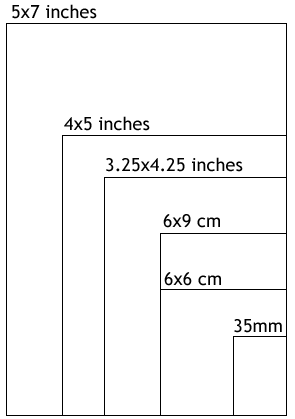
The 6x9, 6x6, and 35mm come in rolls. The others come as sheets.
I thought I would have to do a lot of work on the 4x5 Graflex to make it a user. I thought the back didn't rotate and it used a film back that didn't have any film available for it. Then I saw a 3.25x4.25 Series D Graflex on eBay with several film holders and a rotating back. I got it for $77 which is about 1/3 of what it should have fetched. Good timing. It's a weird size but my Speed Graphic is that size so I already am setting up to process that size.
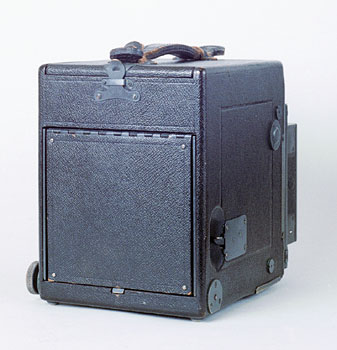
I looks like a box camera with a little strap.
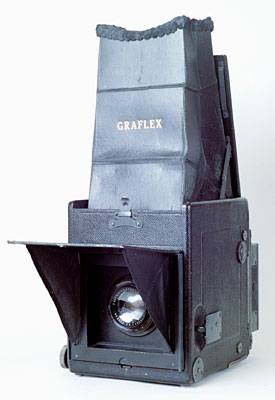
The stovepipe hood looks down on a reflex mirror that pops up when you take the picture. The shutter release is operated by the thumb on your left hand. One of the reasons I was attracted to this camera was the lens. It's a Carl Zeiss Jenna Tessar 150mm f4.5. My 4x5 Graflex has a Carl Zeiss Jenna Tessar 210mm f3.5. Similar lenses that should paint in a similar manner. These Graflexes were probably made in the 1930s.
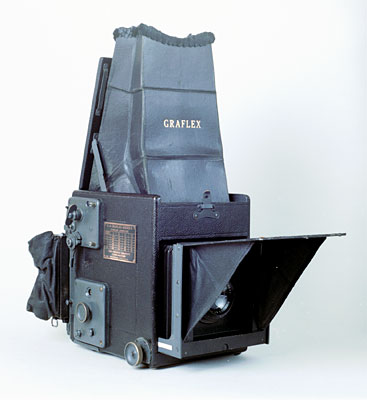
This side shows the upper mechanism that sets the slit size for the focal plane shutter and the lower mechanism sets the tension. It gives speeds up to 1/1,000 of a second. Or it did when new. There will be testing to see what the real speeds are.
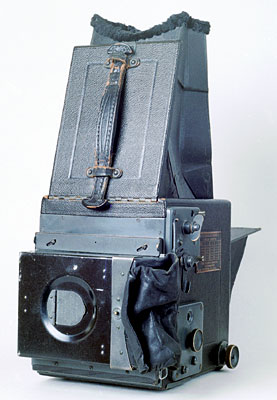
This is the part that blew my mind. It came with 6 normal double-sided sheet film holders. And it came with a bag mag. I had never seen one of these. There is a newer, more automatic, Grafmatic back that holds 6 sheets but these older cut film magazines hold 12 exposures.
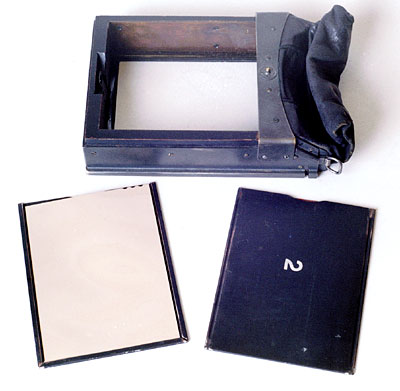
There are 12 metal sheet film holders called septums. You slide a sheet of film in it (in the dark!) and they stack up in the bag mag. Each septum has a number on the back.
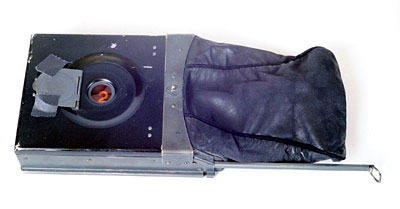
You remove the dark slide and take a picture. Then you pull out the rod which pulls the bottom septum with the exposed film into the bag. You grab the sides of the septum, through the bag, and angle it up and slide it back into the magazine to the top of the pile. I've taped the spring loaded red window cover open so that you can see the number of the exposed septum. You can take all 12 exposures without having to put the dark slide back in.
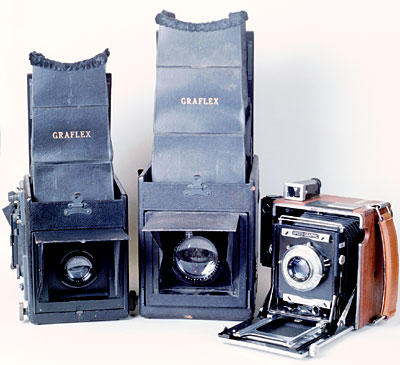
Here is a family picture of my large format hand helds. While the Graflexes are huge, they are pretty light. The 4x5 Graflex is in the middle quite a bit larger. After playing with the smaller Graflex I discovered that the 4x5 Graflex had a revolving back. How I missed that I don't know. I looked on eBay and there were 4 auctions for 4x5 bag mags. The first auction was for two and they went for $54. Too much for me. The next bag mag auction was for one and it went for $53. The power of a good description. The third one went for $30. A good trend. I got the last one for $19.50.
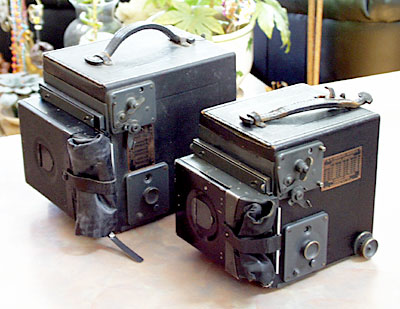
The 4x5 bag mag arrived today. It looks almost new. Here are both Graflexes sporting their bag mags. The 4x5 now really only needs to have the mirror and gound glass cleaned. There is a little more cleaning on the lens, too. If I had known about bag mags I probably wouldn't have gotten the small Graflex. But If I hadn't gotten the small Graflex I wouldn't have known about bag mags. I want to use the big one for portraits and the small one will probaly be a street camera along with the Speed Graphic. Being a SLR the Graflex is better for close in shots and shots that want to be carefully composed. The Speed Graphic is for longer shots and action shots. Did you know that there is also a 5x7 Graflex. Hmmmm.
I should mention that Graflexes were used for some of the most famous street photographs. Dorothea Lange used a 4x5 Graflex for "Migrant Mother". Lewis Hines used a Graflex extensively as did margaret Bourke-White. I think it's still a usefull tool. I'll find out. I'll be shooting 400 film in these cameras. I wish Delta 3200 was available in sheet film. That would be sweet!
Here is some more information on my Series D and the Super D with an an automatic diaphragm.
Graflex RB Series D / Super D
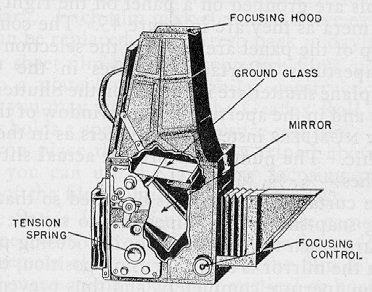
[more]
INSTRUCTION MANUAL
for
Graflex
CAMERAS
RB Super D * RB Series B
|
HOLDING THE GRAFLEX
All Models
The shape of the Graflex and the position of its controls permit it to be held and operated comfortably and without strain. The fact that an erect image is visible in the ground glass, right up to the instant of exposure, further simplifies the handling of the camera.
Rest the camera in both bands, with the fingers under the corresponding front corners of the body (Figure 4). The thumb of the left hand falls naturally on the release lever, while the right thumb and the forefinger are in position to grasp the focusing knob S. To steady the camera, hold it firmly against the chest. To reset the controls after exposure, tilt the camera to the left so it rests on the left hand and forearm.
| |
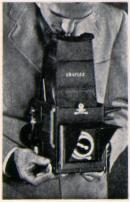
[more] |

